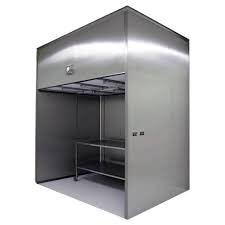Reverse Laminar Air Flow
Reverse Laminar Air Flow (RLAF) is a type of air filtration system commonly used in various industries, including pharmaceuticals, biotechnology, and laboratories, to ensure a clean and contamination-free environment. It works by directing filtered air from the ceiling or a higher point downward in a controlled and uniform manner, creating a clean air zone and preventing contaminants from entering the workspace.
Key Features of Reverse Laminar Air Flow:
- Airflow Direction: The air flows from the top to the bottom, opposite to the direction of potential contaminants rising, hence the term "reverse" laminar flow.
- HEPA Filters: High-Efficiency Particulate Air (HEPA) filters are used to remove airborne particles, including dust, microbes, and other contaminants, ensuring a high level of air cleanliness.
- Containment: The design helps in containing hazardous substances, protecting both the product and the personnel working within the environment.
- Controlled Environment: Maintains a controlled environment by regulating temperature, humidity, and particulate levels.
Applications:
- Pharmaceuticals: Ensuring sterile conditions for the manufacturing and packaging of drugs.
- Biotechnology: Protecting biological samples from contamination.
- Laboratories: Providing a clean environment for sensitive experiments.
- Hospitals: Used in surgical suites and areas requiring high levels of sterility.
Benefits:
- Enhanced Sterility: Reduces the risk of contamination significantly.
- Product Protection: Protects sensitive products from particulate contamination.
- Personnel Safety: Provides a safer working environment by containing hazardous substances.
- Compliance: Helps industries comply with strict regulatory standards for cleanliness and sterility.

